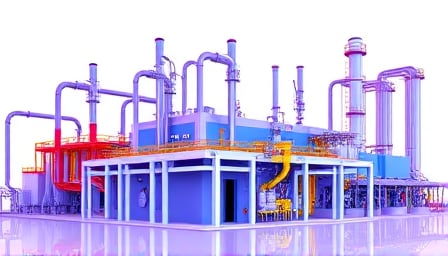Air Products and Chemicals Inc.: A Stock That Has Not Yet Followed the Pulse of the Hydrogen Boom
Five years ago, an investor who bought shares of Air Products and Chemicals Inc. (APC) would have seen their investment shrink by nearly five percent, a loss of roughly 4.74 %. Over the same period the company’s shares have trailed the Nasdaq Composite, falling from the peaks that once defined the firm’s valuation. This underperformance is puzzling given the breadth of APC’s product line and the accelerating demand for hydrogen‑related solutions.
A Portfolio Built for Diverse Sectors
APC’s catalog spans industrial gases—oxygen, nitrogen, argon—and performance materials that are essential to the beverage, healthcare, and semiconductor industries. In each of these sectors, the firm’s gases support everything from carbonation and packaging to medical oxygen therapy and the fabrication of microchips. Yet, despite its entrenched position across such a variety of markets, the company’s market value has not mirrored the rising tide of demand for its core products.
The Hydrogen Surge: Opportunity and Lag
Hydrogen is increasingly positioned as a cornerstone of decarbonization strategies. Governments and corporations alike are committing to hydrogen‑rich portfolios, and technological advances in electrolysis and fuel cells are steadily lowering production costs. Industry forecasts project that the global industrial gases market will swell to a multi‑trillion‑dollar scale by 2030, propelled largely by clean‑energy initiatives and the maturation of hydrogen technology.
In theory, APC should benefit directly from this surge. The firm’s existing infrastructure for gas production and distribution, combined with its experience in high‑purity hydrogen for semiconductor fabrication, places it in a strong position to capitalize on the anticipated expansion. However, the company’s share price has lagged behind the broader market, failing to reflect the optimistic outlook for hydrogen.
Why the Gap Persists
Several factors may explain the disconnect between APC’s potential and its valuation:
Capital Allocation Concerns – Investors have questioned how APC is deploying its capital. While the firm has invested in new production facilities, critics argue that the pace of expansion does not keep pace with the rapid growth projected for the hydrogen market.
Competitive Pressures – The industrial gases sector is crowded, with both traditional players and newer entrants vying for market share. APC’s ability to differentiate itself and secure long‑term contracts could be a determining factor for investors.
Valuation Metrics – Traditional valuation ratios, such as price‑to‑earnings and enterprise value‑to‑EBITDA, have remained comparatively high in the face of modest earnings growth. This may deter value‑oriented investors who are wary of paying a premium for a stock that has not yet demonstrated sustained profitability in the hydrogen arena.
Strategic Focus – While the company’s leadership has articulated a vision for expanding into the hydrogen market, some analysts argue that a clearer, more aggressive roadmap is necessary to translate that vision into concrete financial performance.
Outlook: A Question of Timing
The global shift toward clean energy, and hydrogen in particular, is indisputable. Air Products and Chemicals Inc. possesses the technical expertise, operational capacity, and product portfolio that could enable it to capture a meaningful share of this emerging market. Whether the company’s share price will rise to reflect these prospects depends on its ability to:
- Accelerate investment in hydrogen production and purification facilities.
- Secure long‑term, high‑value contracts with semiconductor and energy companies.
- Communicate a clear, compelling growth strategy that aligns capital deployment with market opportunities.
For now, APC’s stock remains a case study in the complex relationship between industry fundamentals and market perception. The firm’s historical performance suggests that it has weathered cycles before, but investors will continue to watch closely whether it can translate the momentum of the hydrogen economy into tangible shareholder value.
